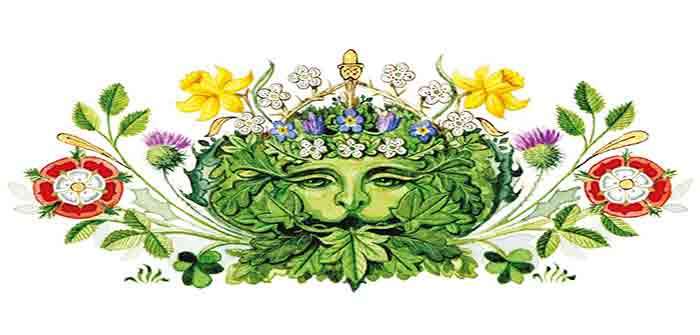
by Gus Carter at The Spectator
All hail our pagan King! The time has come to lay down your crosses and take up the bough of oak. Britain is to return to the old ways — at least if you are to believe the conspiracy theorists, who were distressed to see, on the bottom of the coronation invitation sent out last week, the face of a green man staring back at them. His eyes are bright, his mouth exudes fronds of ivy — the green man calls to us.
Depending on your particular view of the world, his inclusion is either an affront to Christian decency or a jolly salute to our monarch’s peculiarities. The green man is a playfully sinister envoy of the otherworldly. His face, either made entirely of leaves or a fleshy human screaming forth foliage, is carved into hundreds of parish churches. The King will pass under a foliate head when he walks through Westminster Abbey’s quire screen on coronation day.
The green man symbolizes fertility and rebirth. Examples are found across Europe: there is a green man in the sixth-century palace of Constantinople; others in the Freiburg Minster spire. One theory has it that the symbol emerged during the Neolithic period, an element of the matriarchal religion of the Danube basin. From there, the green man made his way into Celtic religion and perhaps the cult of Dionysus, whose adherents would daub their faces with wine and beards of ivy.
There are stories, too, of green men in English history. In the twelfth century, it is said that fishermen recovered a green man from the waters off the Suffolk coast. He was imprisoned in Orford Castle, a few miles from where radar was invented, and refused ever to speak. Nearby, in Woolpit, there is a tale of two green children who appeared in the village, speaking an unknown language and refusing to eat anything but broad beans. The boy died, but the girl eventually learned English, claiming to come from an entirely green world called “St. Martin’s land.”
How did this peculiar symbol make its way into England’s churches?…
Continue Reading